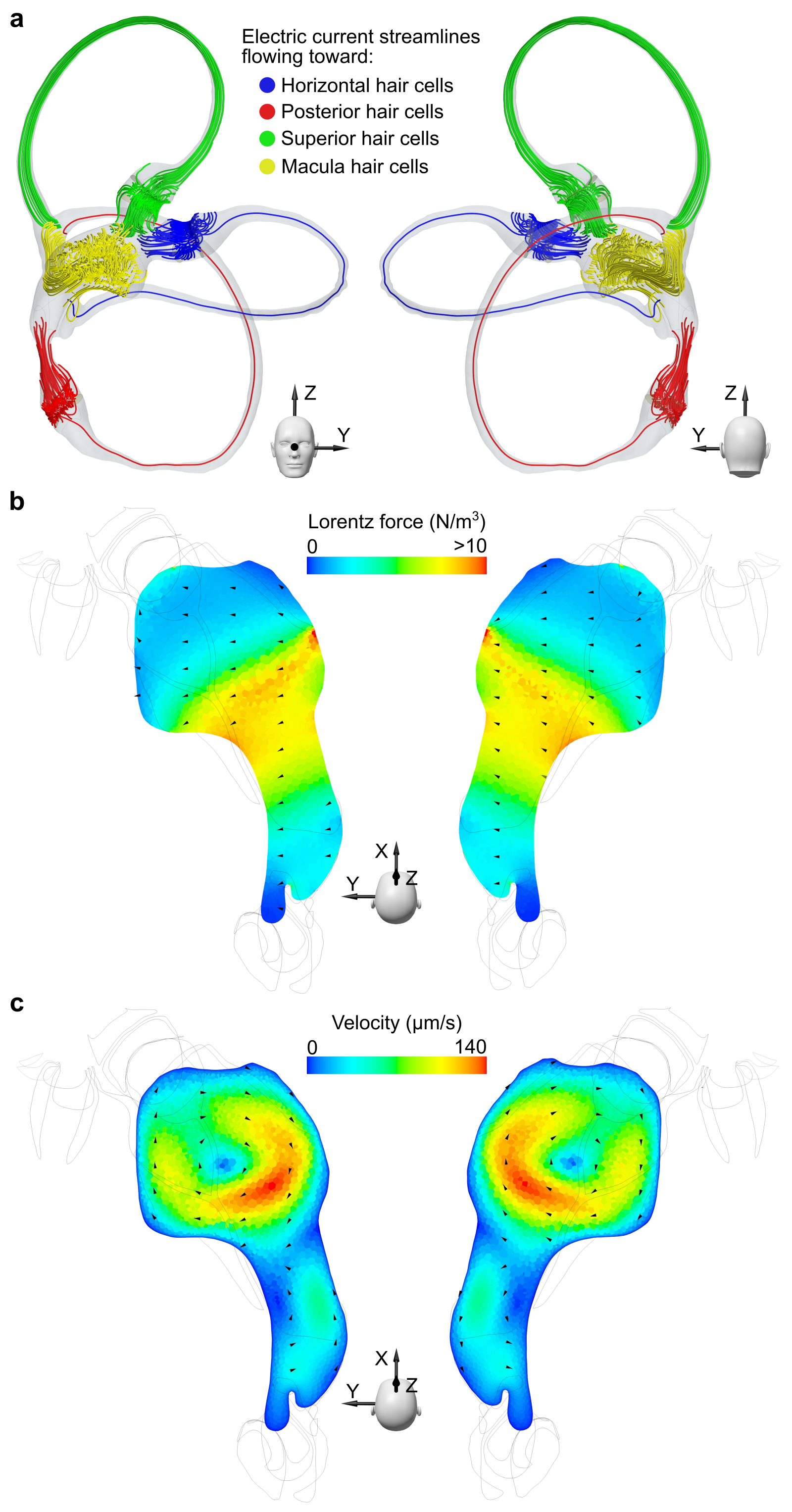Unraveling MRI-Induced Dizziness: The Physics Behind the Sensation
Published in Bioengineering & Biotechnology, Neuroscience, and General & Internal Medicine

Researchers from the University of Santiago de Compostela, the University of California, and Johns Hopkins University have developed a groundbreaking model to explain the dizziness and nausea some patients experience during high-field MRI scans. The model integrates fluid dynamics, solid mechanics, and electromagnetism equations to accurately represent the complex biomechanics of the vestibular system. Their study reveals that the strong static magnetic field interacts with tiny electrical currents in the inner ear, generating a Lorentz force that displaces the inner ear fluid (Figure 1). This subtle fluid shift stimulates the vestibular system—the part of the body responsible for maintaining balance.

To validate their model, the team measured minute eye movements (horizontal, vertical, and torsional nystagmus) in healthy volunteers exposed to different magnetic field strengths and head positions. Although the effects observed were generally mild and harmless, these findings provide crucial insights into how magnetic fields affect our balance during MRI procedures, inducing a sensation of rotation.
Ultimately, this research not only deepens our understanding of the physical interactions during MRI scans but also paves the way for safer, more advanced imaging technologies. Since higher magnetic field strength enhances MRI image resolution, researchers aim to harness this advantage while minimizing unwanted sensations, improving diagnostic accuracy and ensuring greater patient comfort in clinical settings.
Follow the Topic
-
Communications Medicine

A selective open access journal from Nature Portfolio publishing high-quality research, reviews and commentary across all clinical, translational, and public health research fields.
Your space to connect: The Psychedelics Hub
A new Communities’ space to connect, collaborate, and explore research on Psychotherapy, Clinical Psychology, and Neuroscience!
Continue reading announcementRelated Collections
With Collections, you can get published faster and increase your visibility.
Reproductive Health
Publishing Model: Hybrid
Deadline: Mar 30, 2026
Health in Africa
Publishing Model: Open Access
Deadline: Dec 31, 2025





Please sign in or register for FREE
If you are a registered user on Research Communities by Springer Nature, please sign in